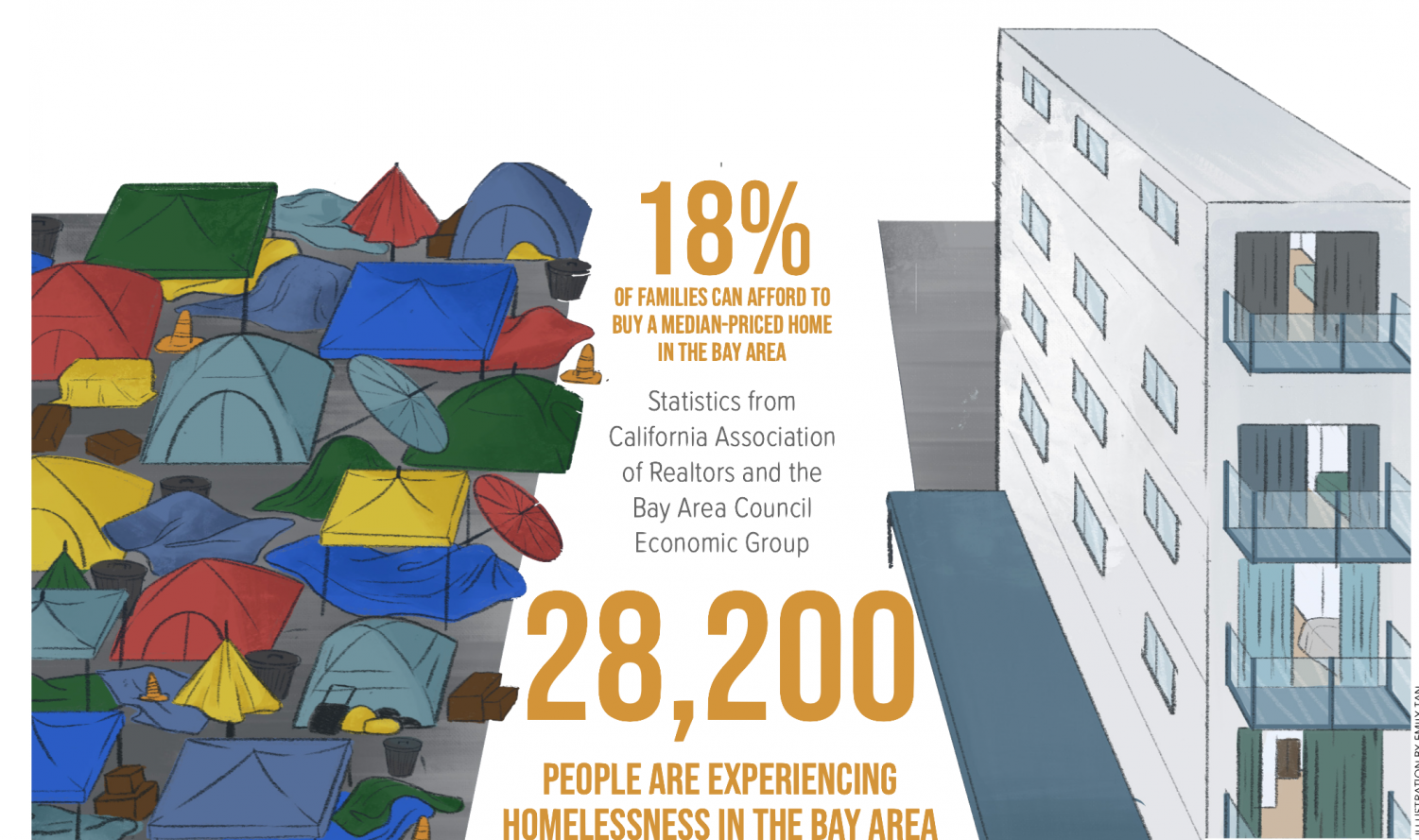Lax zoning allows for affordable homes
March 8, 2020
The affordable housing crisis in the Bay Area is defined by sky-high prices and lack of housing, trends that have only been rising over the last decade. As the number of new jobs rapidly outpaces the amount of available housing units, issues of gentrification, displacement and housing insecurity have permeated our cities and neighborhoods.
According to the 2019 Homeless Census from Santa Clara County, the number of people experiencing homelessness in the county has grown significantly over the last two years, from 7,394 to 9,706 people. San Jose alone makes up a large percentage of this amount, with a homeless count of 6,172, a 42 percent increase since 2017.
And in response to these growing numbers, solutions proposed by legislators have been a temporary relief at best. Despite spending billions of dollars, efforts to create large volumes of affordable housing while abiding by city building limitations have not been successful in mitigating the effects. With stringent zoning regulations, it has become increasingly difficult to gain approval for long-term residential construction in the Bay Area.
By instead relaxing these rules, the housing market can more effectively meet everyone’s needs. Single-family zoning, especially, has historically prohibited denser housing possibilities, which could offer long term relief for unsheltered people. An example of the feasibility of this idea is evident in the economy of Tokyo, Japan.
While having little to no land for development and growing population, the housing prices in Tokyo have been steady, unlike in the San Francisco Bay Area. Attributed to the laissez-faire housing system, Tokyo had 142,417 housing starts in 2014 compared to only 83,657 housing permits issued in the state of California the same year.
Tokyo’s housing system is contingent on a relaxed and residential construction-friendly zoning system. With the system preventing local governments from stalling use of land, a focus on vertical growth of the city’s buildings, less restrained by government zoning, has allowed Tokyo to cope with a rapidly increasing population.
This article was originally published in the pages of the Winged Post on March 2, 2020.



















![“[Building nerf blasters] became this outlet of creativity for me that hasn't been matched by anything else. The process [of] making a build complete to your desire is such a painstakingly difficult process, but I've had to learn from [the skills needed from] soldering to proper painting. There's so many different options for everything, if you think about it, it exists. The best part is [that] if it doesn't exist, you can build it yourself," Ishaan Parate said.](https://harkeraquila.com/wp-content/uploads/2022/08/DSC_8149-900x604.jpg)




![“When I came into high school, I was ready to be a follower. But DECA was a game changer for me. It helped me overcome my fear of public speaking, and it's played such a major role in who I've become today. To be able to successfully lead a chapter of 150 students, an officer team and be one of the upperclassmen I once really admired is something I'm [really] proud of,” Anvitha Tummala ('21) said.](https://harkeraquila.com/wp-content/uploads/2021/07/Screen-Shot-2021-07-25-at-9.50.05-AM-900x594.png)







![“I think getting up in the morning and having a sense of purpose [is exciting]. I think without a certain amount of drive, life is kind of obsolete and mundane, and I think having that every single day is what makes each day unique and kind of makes life exciting,” Neymika Jain (12) said.](https://harkeraquila.com/wp-content/uploads/2017/06/Screen-Shot-2017-06-03-at-4.54.16-PM.png)








![“My slogan is ‘slow feet, don’t eat, and I’m hungry.’ You need to run fast to get where you are–you aren't going to get those championships if you aren't fast,” Angel Cervantes (12) said. “I want to do well in school on my tests and in track and win championships for my team. I live by that, [and] I can do that anywhere: in the classroom or on the field.”](https://harkeraquila.com/wp-content/uploads/2018/06/DSC5146-900x601.jpg)
![“[Volleyball has] taught me how to fall correctly, and another thing it taught is that you don’t have to be the best at something to be good at it. If you just hit the ball in a smart way, then it still scores points and you’re good at it. You could be a background player and still make a much bigger impact on the team than you would think,” Anya Gert (’20) said.](https://harkeraquila.com/wp-content/uploads/2020/06/AnnaGert_JinTuan_HoHPhotoEdited-600x900.jpeg)

![“I'm not nearly there yet, but [my confidence has] definitely been getting better since I was pretty shy and timid coming into Harker my freshman year. I know that there's a lot of people that are really confident in what they do, and I really admire them. Everyone's so driven and that has really pushed me to kind of try to find my own place in high school and be more confident,” Alyssa Huang (’20) said.](https://harkeraquila.com/wp-content/uploads/2020/06/AlyssaHuang_EmilyChen_HoHPhoto-900x749.jpeg)










